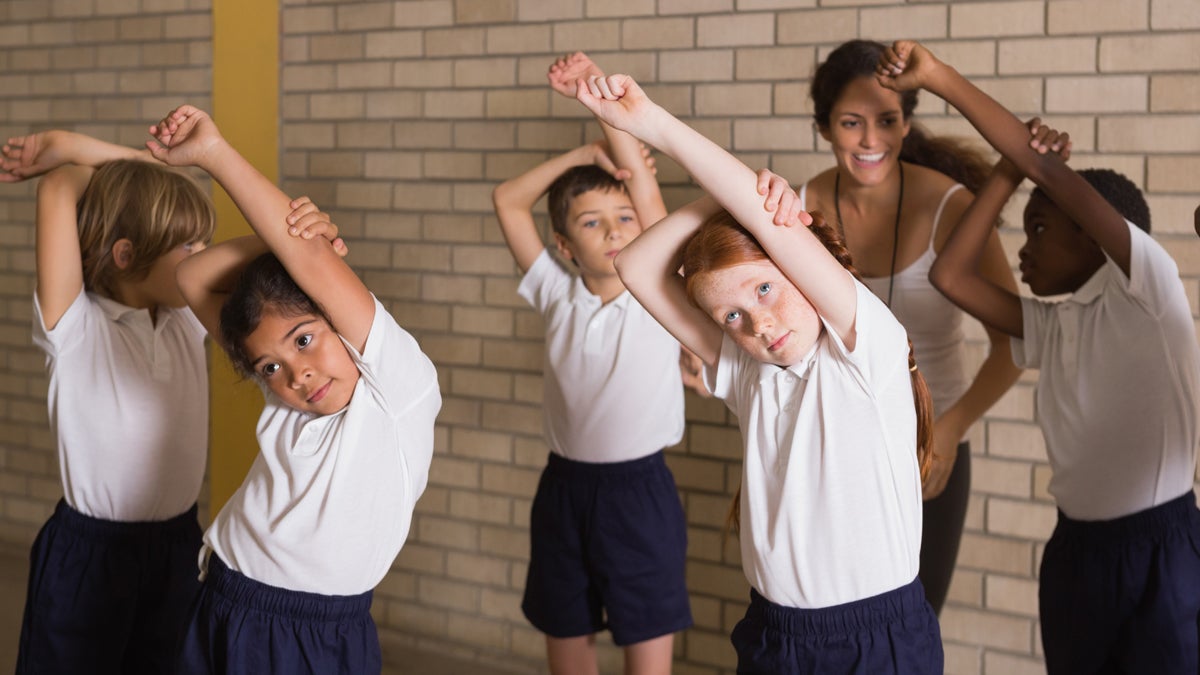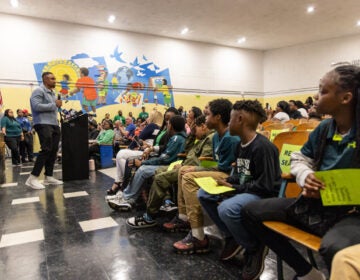Survey points to more cuts in Pa. school districts [updated]
 Photo via ShutterStock) " title="ssphysicaleducationx1200" width="1" height="1"/>
Photo via ShutterStock) " title="ssphysicaleducationx1200" width="1" height="1"/>
(Photo via ShutterStock)
School districts across Pennsylvania say they’re struggling to do more with less, according to a recent survey that looks at school budgets.
It shows most of the state’s school districts are looking at more tax increases as well as cuts to programs and staff cuts to keep up with costs for mandates services.
About 64 percent — or 321 — of the state’s 500 school districts participated in the annual survey, commissioned jointly by the Pennsylvania Association of School Administrators and the Pennsylvania Association of School Budget Officials.
The survey revealed that nearly all of the districts raised property taxes at least once over the past five years, and 60 percent raised taxes every one of those years.
Jay Himes, PASBO’s executive director, says the study reveals more of what districts have already faced.
“It, unfortunately, portrays another year of more cuts, more pain and less opportunities for students,” he said.
Raising property taxes alone won’t help school districts keep up with the increased costs because of the millage cap.
“So they will have to look for alternatives in terms of reducing expenditures, so less programs, less personnel and using any reserve funds they may have.”
The most significant costs are pensions, health care, special education and charter school tuition.
“Pension obviously is the 800-pound gorilla,” Himes said. “The pension rate that districts have to pay will escalate another 4.5 percentage points.”
Every percentage point increase costs the school districts and the state about $130 million, Himes noted.
Wolf calls for restoring $1 billion in education cuts
Gov. Tom Wolf Tuesday proposed a $29.9 billion state budget, with plans to restore $1 billion in cuts to education funding made by his predecessor within the year. He proposed reducing local property taxes by $4 billion for poorer, highly taxed areas and seniors on fixed incomes by increasing state taxes on income, sales and gas drilling. Wolf’s K-12 education spending would be one-third of the budget.
He also pledged to work with the Legislature to develop a school funding formula that is “equitable and transparent.”
But Wolf’s plan faces a rocky road, with the Legislature’s GOP leadership already lining up against the proposal. As that political struggle plays out, schools will continue to economize.
Most schools have already made larger expense cuts to past budgets, so additional reductions become “a cut by a thousand scratches,” like making double-sided copies instead of single copies.
Ninety-three percent of the districts reported staff reduction in the past five years, including Upper Darby School District in Delaware County.
It has cut expenses by $23 million over the past six years to balance its budget.
Superintendent Rick Dunlap says that includes $8 million cuts to academic supports, such as literacy specialists.
“We’re trying to give our students the best education possible, but also deal with the mandates, when it comes to testing,” he said. “When you lose those academic supports it’s hard to do as well as you were doing on the testing.”
Upper Darby has eliminated the jobs of 21 district-wide literacy coaches and 15 elementary reading specialists in the past few years, as well as reduced teaching positions in foreign language, health, physical education and social studies.
Cuts to academic programs not unusual
Out of all the school districts in the survey, 74 percent reported cuts to, at least, one academic program. Non-mandated programs are on the chopping block, including kindergarten.
Almost two-thirds of Upper Darby’s students receive a free or reduced lunch, a population Dunlap says needs academic supports.
Teachers also have more students, which affects more than academics.
“When you look at education, it’s not just all about numbers, it’s about relationships,” he said. “They’re trying to establish more relationships with more children. That’s a hard thing to do.”
Dunlap, in his second year as superintendent, said $90 million of the district’s $170 million budget comes from the local tax base.
“It’s gone up anywhere from $50 to $100 a household over the past five years,” he said of tax increases. “The important thing to know is that is just to maintain.”
School officials are waiting on the Basic Education Funding Commission’s recommendation, due in June, on a new funding formula for schools.
PASBO’s Himes said they want to see the state be a more equal partner in funding schools.
Pennsylvania ranks 44th out of 50 in the percentage of state funding for public education. It currently provides 36 percent of K-12 revenue.
WHYY is your source for fact-based, in-depth journalism and information. As a nonprofit organization, we rely on financial support from readers like you. Please give today.




